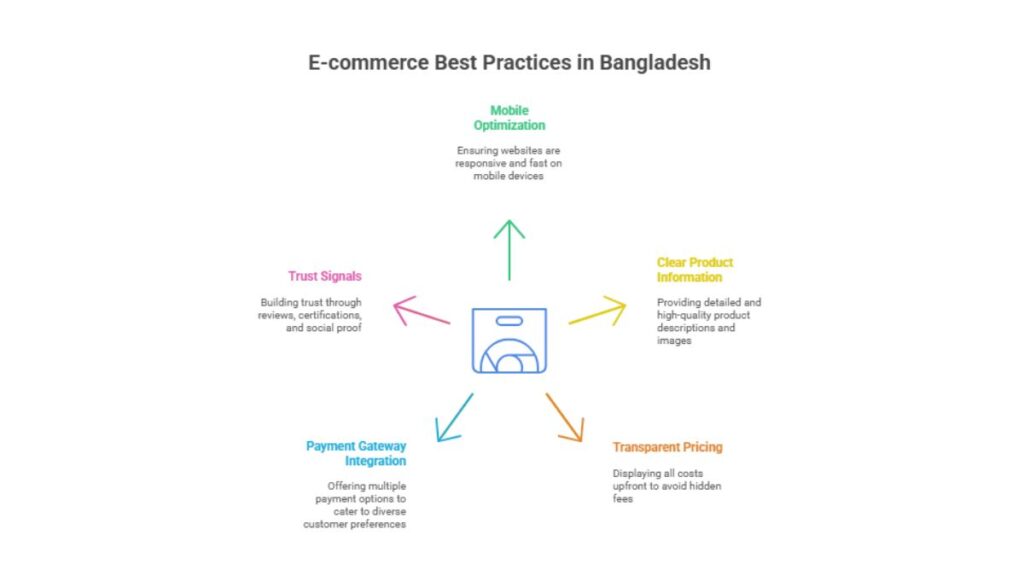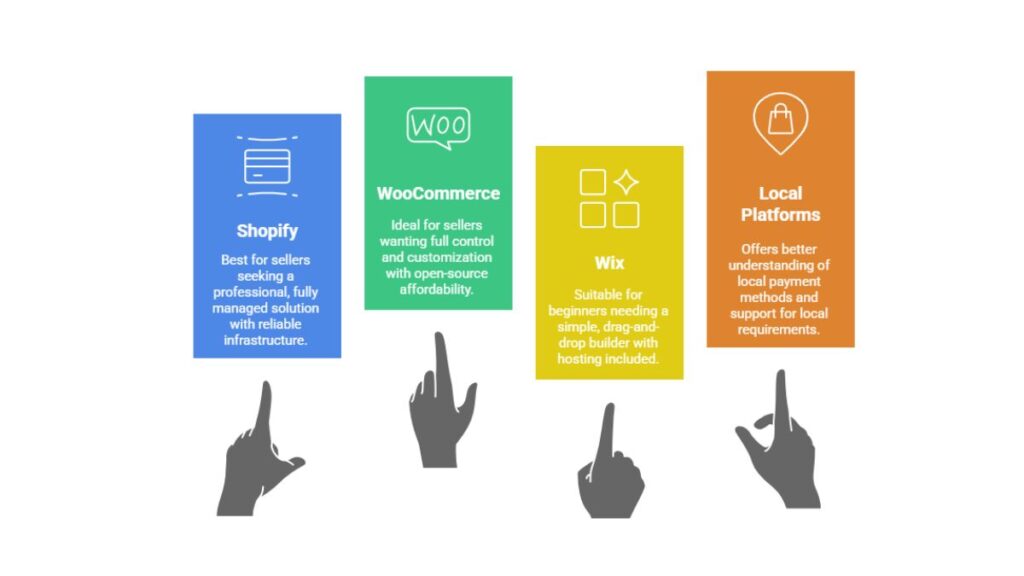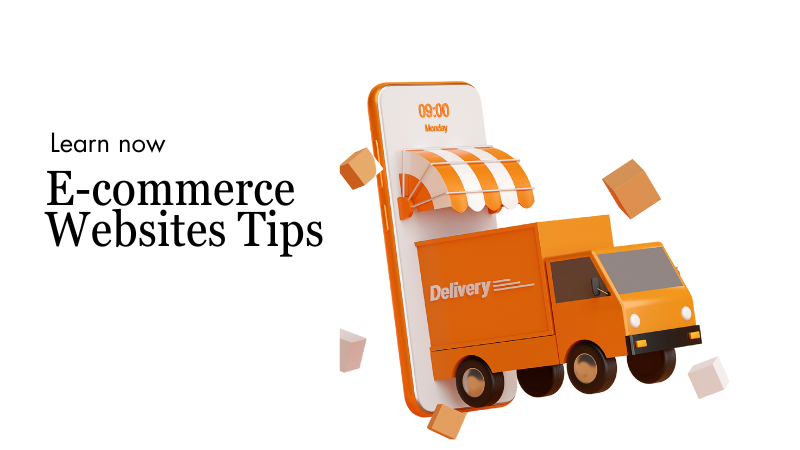Building an e-commerce website in Bangladesh isn’t as simple as choosing a platform and uploading products. The market has unique challenges, customer preferences differ from Western markets, and there are specific tools and practices that actually work here.
If you’re planning to sell online in Bangladesh, you need to understand what separates successful stores from abandoned projects. Let me walk you through the best practices and the tools that actually deliver results in the Bangladesh market.
Understanding the Bangladesh E-commerce Customer
Before we talk about platforms and tools, you need to understand who your customer is and how they shop differently.
Mobile-first shopping: Over 85% of your traffic will come from mobile devices. This isn’t just a preference – it’s how Bangladeshi customers shop. They browse on their phones during lunch breaks, commutes, and evenings. If your website isn’t optimized for mobile, you’ve already lost most of your potential customers.
Payment preferences matter: Your customers want options. Cash on delivery is still popular, especially for first-time buyers. But increasingly, they’re comfortable with bKash, Nagad, and Rocket payments. Some will use debit cards. Many won’t use credit cards. You need to support all these methods.
Trust is hard to build: Customers are cautious about online shopping. They want to see product images, detailed descriptions, customer reviews, and clear return policies. They want to know who they’re buying from. A professional website matters because it signals legitimacy.
Speed matters: Internet speeds in Bangladesh aren’t what they are in developed countries. A website that loads slowly will frustrate customers and kill conversions. Fast loading times aren’t optional – they’re essential.
Local language support: While English works, having content in Bangla builds trust and reaches a wider audience. At a minimum, your navigation and key information should be in Bangla.
Best Practices for E-commerce Websites in Bangladesh

1. Mobile Optimization is Non-Negotiable
I can’t stress this enough. Mobile optimization isn’t a nice-to-have – it’s essential.
This means your website should have:
- A responsive design that works well on all screen sizes
- Fast loading times (ideally under 3 seconds)
- Easy navigation with clear menus
- Large buttons that are easy to tap
- A simple and smooth checkout process
Test your website on real mobile devices and internet speeds that are common in Bangladesh. What works well on 4G in Dhaka might be very slow on 3G in smaller cities, so ensure your site functions smoothly even on slower connections.
Google’s Core Web Vitals matter too. They measure loading speed, visual stability, and interactivity. A site that passes these metrics will rank better and convert better.
2. Clear Product Information and High-Quality Images
Bangladeshi customers can’t touch or see products in person. They rely entirely on images and descriptions to make decisions.
Use high-quality product images from multiple angles. Include lifestyle photos showing the product in use. If you’re selling clothing, show size charts with actual measurements. If it’s electronics, include specifications clearly.
Write detailed product descriptions. Don’t just say “red shirt.” Say: “100% cotton red shirt, comfortable for summer wear, machine washable, available in sizes XS-XXL, perfect for casual outings.” Include benefits, not just features.
Add product specifications in a structured format. Make them easy to scan. Customers don’t want to read paragraphs – they want to find the information they need quickly.
3. Transparent Pricing and Policies
Hidden costs kill conversions. Show the full price including shipping (if you’re offering free shipping) or clearly state shipping costs upfront. Show tax if applicable.
Have a clear return policy. State it prominently. Many customers hesitate to buy online because they’re worried about returns. A hassle-free return policy – even 7 or 14 days – removes this objection.
Display your contact information prominently. A phone number, email, and social media handles signal that you’re a real business, not a scam.
4. Payment Gateway Integration
It’s important to offer multiple payment methods on your website. At a minimum, you should include:
- Cash on Delivery (COD) – still the most popular method
- bKash – essential for digital payments
- Nagad – increasingly important
- Rocket – popular in some regions
- Credit/debit card payments through SSLCommerz or similar
Different customers prefer different ways to pay. If you provide all these options, every customer can pay comfortably, and you won’t lose sales because of limited payment choices.
5. Trust Signals and Social Proof
Bangladeshi customers are naturally cautious about online shopping. You need to build trust actively.
Display customer reviews and ratings. Real reviews are gold. If you’re new, start with friends and early customers to build initial reviews.
Show trust badges and certifications. Display your business registration, any awards, or partnerships.
Include customer testimonials. Video testimonials are even better if you can get them.
Show your team. Include photos and bios of your founders/team members. This humanizes your business.
Display your social media followers and engagement. If you have a large Facebook following, that signals legitimacy to Bangladesh customers.
Platform Choices for Bangladesh E-commerce

Shopify
Pros: User-friendly, reliable, integrates with multiple payment gateways, good mobile experience, professional templates, and good customer support.
Cons: Monthly subscription costs (starting from $29), transaction fees apply, you’re dependent on their infrastructure, and it might be too much for small sellers.
Best for: Sellers who want a professional, fully managed solution and don’t mind paying for reliability.
WooCommerce (WordPress)
Pros: Open-source, affordable (just pay for hosting), highly customizable, full control over your site, good SEO capabilities, and large community support.
Cons: Requires more technical knowledge to set up and maintain, you’re responsible for security updates, slower than some alternatives, and needs good hosting to perform well.
Best for: Sellers who want full control and have some technical capability or can hire developers. Popular choice among Bangladesh e-commerce businesses.
Wix
Pros: Drag-and-drop builder, affordable, includes hosting, good templates, decent e-commerce features.
Cons: Limited customization compared to WordPress, slower loading times, can be expensive as you add features, and less flexible for scaling.
Best for: Beginners who want something simple and don’t need advanced features.
Local Bangladesh Platforms
Some Bangladeshi developers have built local e-commerce platforms specifically for the market. These often understand local payment methods better and might have better support for local requirements.
Research what’s available locally. Sometimes a platform built for the Bangladesh market works better than international options.
Essential Tools for Bangladesh E-commerce Success

Payment Gateways
SSLCommerz: The most popular payment gateway in Bangladesh. Supports credit/debit cards, bKash, Nagad, Rocket, and mobile banking. If you’re using WooCommerce or custom development, SSLCommerz is essential.
AmiPay: Another solid option that integrates with multiple local payment methods.
bKash Payment Gateway: Direct integration with bKash for faster transactions.
Nagad Payment Gateway: Direct integration with Nagad for direct transfers.
SEO and Analytics Tools
Google Search Console: Free. Essential for understanding how your site performs in search results. Shows you which keywords drive traffic, click-through rates, and technical issues.
Google Analytics: Free. Track visitor behavior, understand where traffic comes from, identify which products get attention, and see conversion rates.
Ahrefs or SEMrush: Paid tools for deeper SEO analysis. Track competitor keywords, identify link opportunities, and find content gaps. Worth the investment if you’re serious about organic traffic.
Moz Local: Helps with local search visibility, which is important for reaching customers in specific cities.
Email Marketing
Mailchimp: Free tier available, good for starting out. Build email lists and send newsletters to nurture customers.
ConvertKit: Better for building a content-driven email strategy.
Brevo (formerly Sendinblue): Good for e-commerce with automation features.
Email marketing is often underutilized but incredibly effective. Building a customer email list is valuable because it helps drive repeat purchases and keeps customers loyal to your store.
Social Media Management
Later or Buffer: Schedule posts across Instagram, Facebook, and TikTok. Plan content in advance.
Canva: Create professional graphics and posts without design skills. Essential for social media marketing.
Meta Business Suite: Free tool from Facebook for managing Facebook and Instagram pages together.
Customer Service Tools
Tidio or Drift: Live chat on your website. Real-time customer support increases trust and conversion.
Zendesk: More sophisticated customer service management as you scale.
WhatsApp Business: Many Bangladesh customers prefer communicating through WhatsApp. Use it for customer support and order updates.
Inventory Management
Zoho Inventory: Connects to your online store, tracks stock levels, and alerts you when items are low.
TradeGecko: For more complex inventory needs across multiple channels.
For small sellers, a simple Google Sheets or Excel spreadsheet might work initially, but as you grow, you’ll need automation.
Shipping and Logistics
Pathao: Popular courier service in Bangladesh. They offer APIs for integration.
Steady Courier: Another major option for shipping.
EMI, Sundarban Courier: More options depending on your region.
Integrating these courier services with your e-commerce platform helps automate order processing and makes delivery faster and easier for your customers.
Image Optimization
TinyPNG or Compressor.io: Reduce image file sizes without losing quality. Important for fast loading times.
Canva: Create product images and graphics.
Adobe Lightroom or GIMP: More advanced image editing.
Website Design Best Practices Specific to Bangladesh
Homepage Design
Your homepage should immediately communicate what you sell and why customers should buy from you.
Include a clear value proposition above the fold. Don’t make visitors scroll to understand what your business does.
Feature your best-selling or highest-margin products prominently. Show categories clearly. Include a search bar – many visitors know what they want and will search rather than browse.
Display trust signals prominently: customer testimonials, number of customers served, years in business, and social media follower count.
Product Page Optimization
Each product page should be optimized for conversions.
Start with high-quality images. Include an image gallery showing different angles and colors.
Include the product title, price, and availability status clearly at the top.
Below the price, show the discount if applicable. Bangladeshi customers love seeing savings.
Include a detailed description with benefits. Then list the specifications in an easy-to-scan format.
Add a prominent “Add to Cart” button. Make it easy to find and use.
Include customer reviews. Even a few reviews significantly increase trust and conversions.
Show related products at the bottom. This increases average order value.
Checkout Process
Optimize your checkout to reduce cart abandonment.
Make checkout as few steps as possible. Ideally, 3-4 steps maximum.
Don’t require account creation before checkout (offer it as an option after purchase).
Show progress. Let customers see which step they’re on.
Clearly display the total cost, including all fees and shipping.
Offer multiple payment options as mentioned earlier.
Display security badges and SSL certificate information to build trust.
Navigation and User Experience
Keep navigation simple. Don’t overwhelm visitors with too many menu options.
Include search functionality. Many visitors will search rather than browse.
Make categories and filters work well. Customers should be able to narrow products by price, color, size, rating, etc.
Include breadcrumbs so visitors always know where they are on your site.
Use clear, descriptive link text. “Shop Now” is better than “Click Here.”
Content Strategy for E-commerce Websites
Your e-commerce site shouldn’t just be a catalog. It should include content that helps customers and improves SEO.
Blog Content
Write blog posts that answer customer questions. If you’re selling skincare products, write posts about: “How to choose skincare for sensitive skin,” “Best skincare routine for humid climates,” etc.
This content serves two purposes. It helps customers make better decisions (improving trust and conversions), and it captures organic search traffic. Customers often search for solutions before they search for products.
Target long-tail keywords. Rather than competing for “skincare,” you can target “best skincare for oily skin in Bangladesh” or “affordable skincare for teenage skin.”
Product Guides and Buying Guides
Create comprehensive guides that help customers understand your products.
“Complete Guide to Choosing the Right Laptop in Bangladesh” helps customers understand your laptop offerings while being genuinely useful.
These guides build authority and capture search traffic.
Customer FAQ Page
Compile the most common questions you get from customers.
“How long does delivery take?” “What’s your return policy?” “Do you accept bKash?” “Can I track my order?”
An FAQ page reduces customer service burden and improves user experience.
Technical SEO for E-commerce Sites
Site Speed
Use a Content Delivery Network (CDN) to ensure fast loading across Bangladesh.
Optimize images aggressively. Large image files kill performance.
Use a caching plugin (if on WordPress) to store static content.
Minimize CSS and JavaScript.
Test your site speed regularly using Google PageSpeed Insights. Aim for scores above 80.
Mobile Optimization
Use a responsive design that works on all devices.
Test on actual mobile devices and slow connections.
Use mobile-first indexing in your head (Google now primarily indexes the mobile version of sites).
URL Structure
Use descriptive URLs. /red-cotton-shirt-XL is better than /product-123.
Include your target keywords in URLs where it makes sense, but prioritize clarity.
Schema Markup
Implement product schema markup so search engines understand your product information.
Implement the organization schema to help search engines understand your business.
Use review schema markup for customer reviews.
This structured data helps search results look better and can improve click-through rates.
Internal Linking
Link between related products. If you’re selling laptops, link to laptop accessories on product pages.
Create topic clusters where your blog posts link to relevant product pages.
Use descriptive anchor text. “Best budget laptop in Bangladesh” is better than “click here.”
Marketing Your E-commerce Website
Having a great website means nothing if nobody visits it. You need a marketing strategy.
Organic Search (SEO)
SEO is a long-term play. It takes months to see results, but once you rank, you get consistent traffic.
Identify keywords your customers actually search for. Use Google Search Console and keyword research tools.
Create content targeting these keywords. Balance commercial keywords (customers ready to buy) with informational keywords (customers researching).
Build backlinks to your site. Reach out to relevant blogs and websites in your niche.
Local SEO is important. Optimize for “best [product] in [city]” type keywords.
Paid Advertising
Google Shopping Ads: Display your products directly in Google search results. Highly effective for e-commerce.
Facebook and Instagram Ads: Target specific demographics and interests. Good for brand awareness and reaching new customers.
Google Search Ads: Pay for clicks on specific keywords. Quick way to drive traffic while you work on organic ranking.
TikTok Ads: A growing platform in Bangladesh, especially for younger audiences.
Social Media Marketing
Build organic presence on Facebook, Instagram, and TikTok. This is free and builds trust over time.
Post product photos, customer testimonials, behind-the-scenes content, and helpful tips.
Engage with comments and messages quickly. Community building matters.
Use influencer partnerships. Local micro-influencers often deliver better ROI than big names.
Email Marketing
Build an email list from day one. Offer a discount code in exchange for email signups.
Send regular newsletters with product recommendations, tips, and special offers.
Email marketing has high ROI – people who’ve already shown interest by visiting your site are worth staying in touch with.
Referral Programs
Incentivize existing customers to refer friends. A simple discount code for both the referrer and the new customer builds growth.
Word-of-mouth is powerful in Bangladesh. Make it rewarding for customers to spread the word.
Common Mistakes to Avoid
Ignoring mobile: Building desktop-first and then squeezing it to mobile doesn’t work. Start with mobile.
Poor images: Blurry or low-quality product photos reduce sales. Invest in high-quality images.
Complicated checkout: Every extra step increases cart abandonment. Keep it simple.
No payment options: Forcing customers to use only a card or only COD limits your audience.
Slow loading times: Test your site on slow connections. Speed matters in Bangladesh.
No customer support: Customers need ways to reach you. Provide live chat, phone, email, or WhatsApp support.
Copying competitors: Understand your unique value. Why should customers buy from you instead of Daraz?
No content strategy: Just product listings get old. Add value through content.
Not tracking metrics: You can’t improve what you don’t measure. Use analytics.
Ignoring reviews: Don’t just collect reviews and ignore them. Respond to feedback.
Building Your E-commerce Presence: The Action Plan
Month 1: Choose your platform. Set up basic store structure. Add initial products with high-quality images and descriptions.
Month 2: Integrate payment gateways. Set up email marketing. Create your return/shipping policies.
Month 3: Launch and start driving traffic through paid ads and social media.
Month 4+: Build organic traffic through SEO and content. Continuously optimize based on data.
Read More: Bangladesh E-commerce Market Growth: What Business Owners Need to Know
The Reality Check
Building a successful e-commerce site in Bangladesh needs more than just a good platform. It needs:
- A professional, well-designed website optimized for mobile
- Clear product information that builds trust
- Multiple payment options that match customer preferences
- A marketing strategy to drive traffic
- Continuous optimization based on data
- Good customer service
Many sellers build a website and hope customers find them. That’s not a strategy.
The successful e-commerce businesses in Bangladesh are the ones that invest in the fundamentals – good design, SEO, content, and marketing. They understand their customers and create experiences that match how Bangladeshi customers actually shop.
If you’re just starting, focus on getting the basics right before worrying about advanced tactics. A simple, well-optimized site that converts beats a complex site that doesn’t.
If you need help designing a professional e-commerce website, optimizing it for search engines, or building a complete digital marketing strategy to drive traffic, these investments usually pay off through increased sales within a few months.
The opportunity in Bangladesh e-commerce is real, and the competition is growing. Starting now with a clear strategy and the right tools gives you an advantage over sellers who enter later without proper planning.
